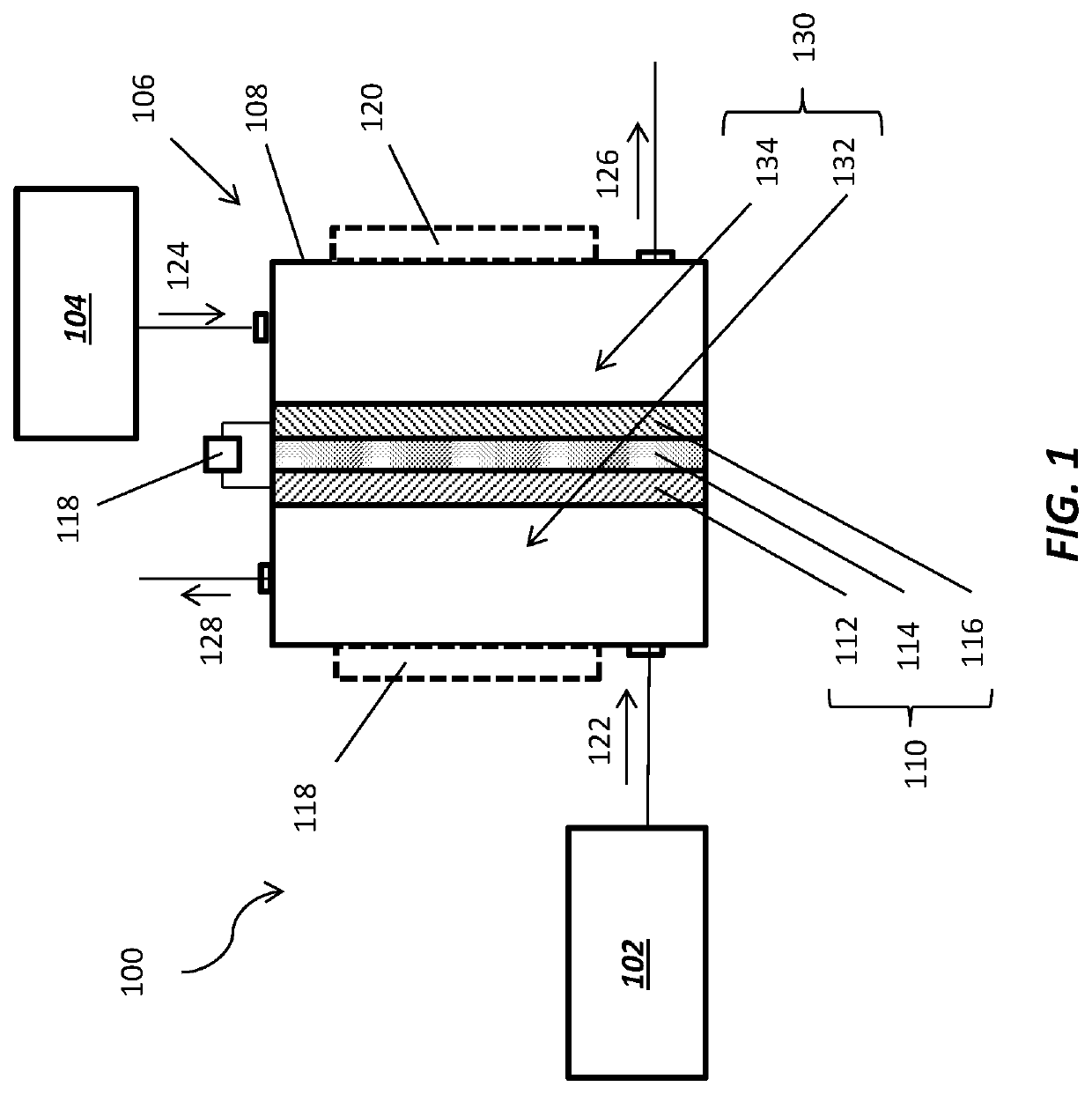Methods and systems for co-producing hydrocarbon products and ammonia, and related electrochemical cells
a technology of hydrocarbon products and electrochemical cells, which is applied in the direction of organic compounds/hydrides/coordination complex catalysts, physical/chemical process catalysts, bulk chemical production, etc., can solve the problems of thermal energy expenditure, unsatisfactory energy expenditure, and/or environmental impact, and conventional stream cracking processes can require the use of complicated and costly systems and methods, etc., to accelerate reaction rates, accelerate reaction rates, and accelerate reaction rates
- Summary
- Abstract
- Description
- Claims
- Application Information
AI Technical Summary
Benefits of technology
Problems solved by technology
Method used
Image
Examples
Embodiment Construction
[0011]Methods and systems for co-producing hydrocarbon products and NH3 through electrochemical activation of C2H6 are disclosed. In some embodiments, a method of co-producing a hydrocarbon product (e.g., butylene, gasoline, diesel, etc.) and NH3 comprises delivering C2H6 and N2 to electrochemical apparatus including at least one electrochemical cell therein. The electrochemical cell includes a positive electrode (e.g., anode), a negative electrode (e.g., cathode), and a proton-conducting membrane between the positive electrode and the negative electrode. The positive electrode comprises at least one catalyst material formulated to accelerate to C2H6 deprotonation reaction rates to produce C2H4, H+, and e− from C2H6, and to accelerate ethyl coupling reaction rates to synthesize at least one hydrocarbon product from the produced C2H4. The negative electrode comprises at least one additional catalyst material formulated to accelerate N2 protonation reaction rates to produce NH3 from N...
PUM
| Property | Measurement | Unit |
|---|---|---|
| temperatures | aaaaa | aaaaa |
| ionic conductivity | aaaaa | aaaaa |
| temperatures | aaaaa | aaaaa |
Abstract
Description
Claims
Application Information
 Login to View More
Login to View More - R&D
- Intellectual Property
- Life Sciences
- Materials
- Tech Scout
- Unparalleled Data Quality
- Higher Quality Content
- 60% Fewer Hallucinations
Browse by: Latest US Patents, China's latest patents, Technical Efficacy Thesaurus, Application Domain, Technology Topic, Popular Technical Reports.
© 2025 PatSnap. All rights reserved.Legal|Privacy policy|Modern Slavery Act Transparency Statement|Sitemap|About US| Contact US: help@patsnap.com


